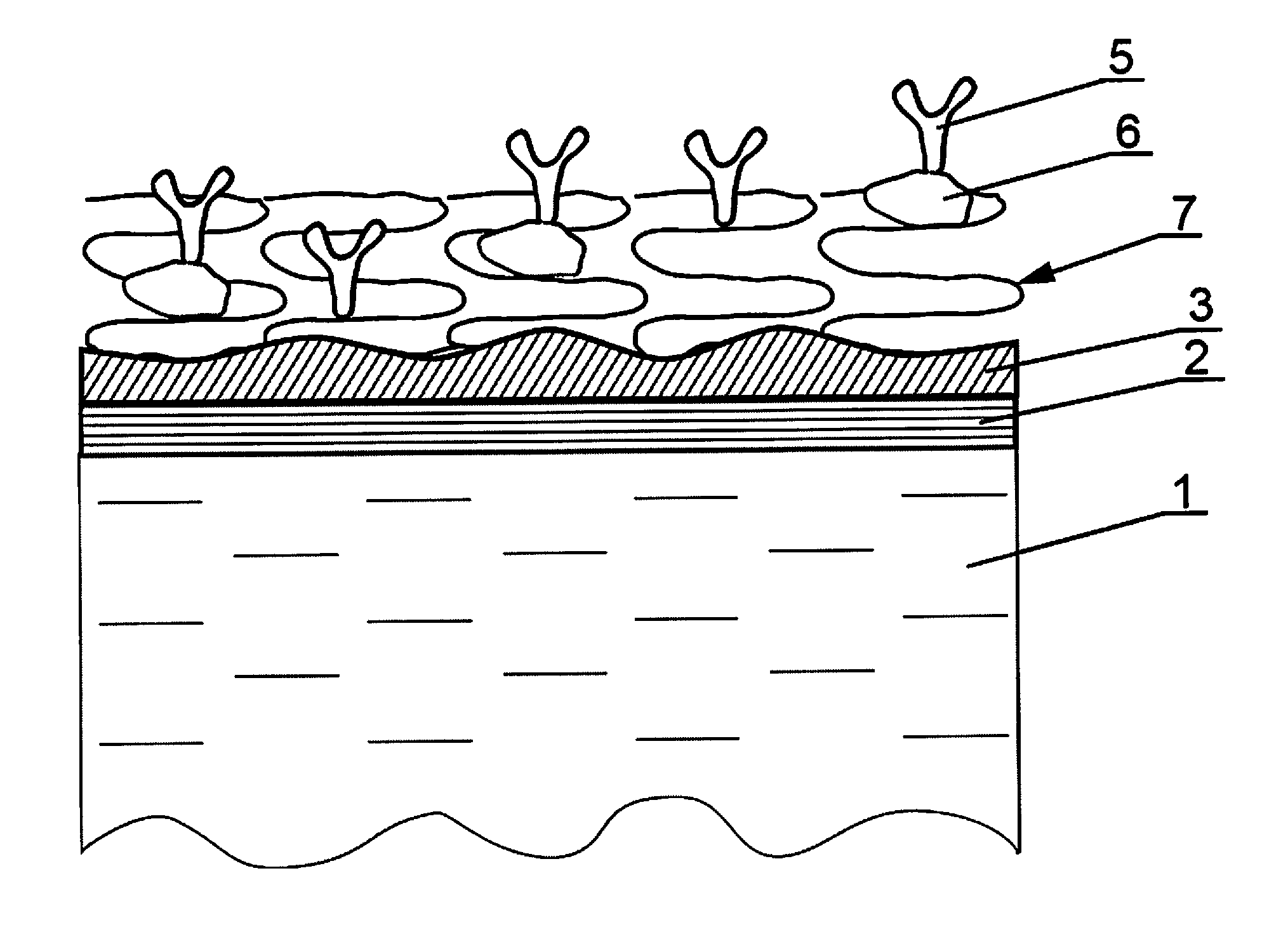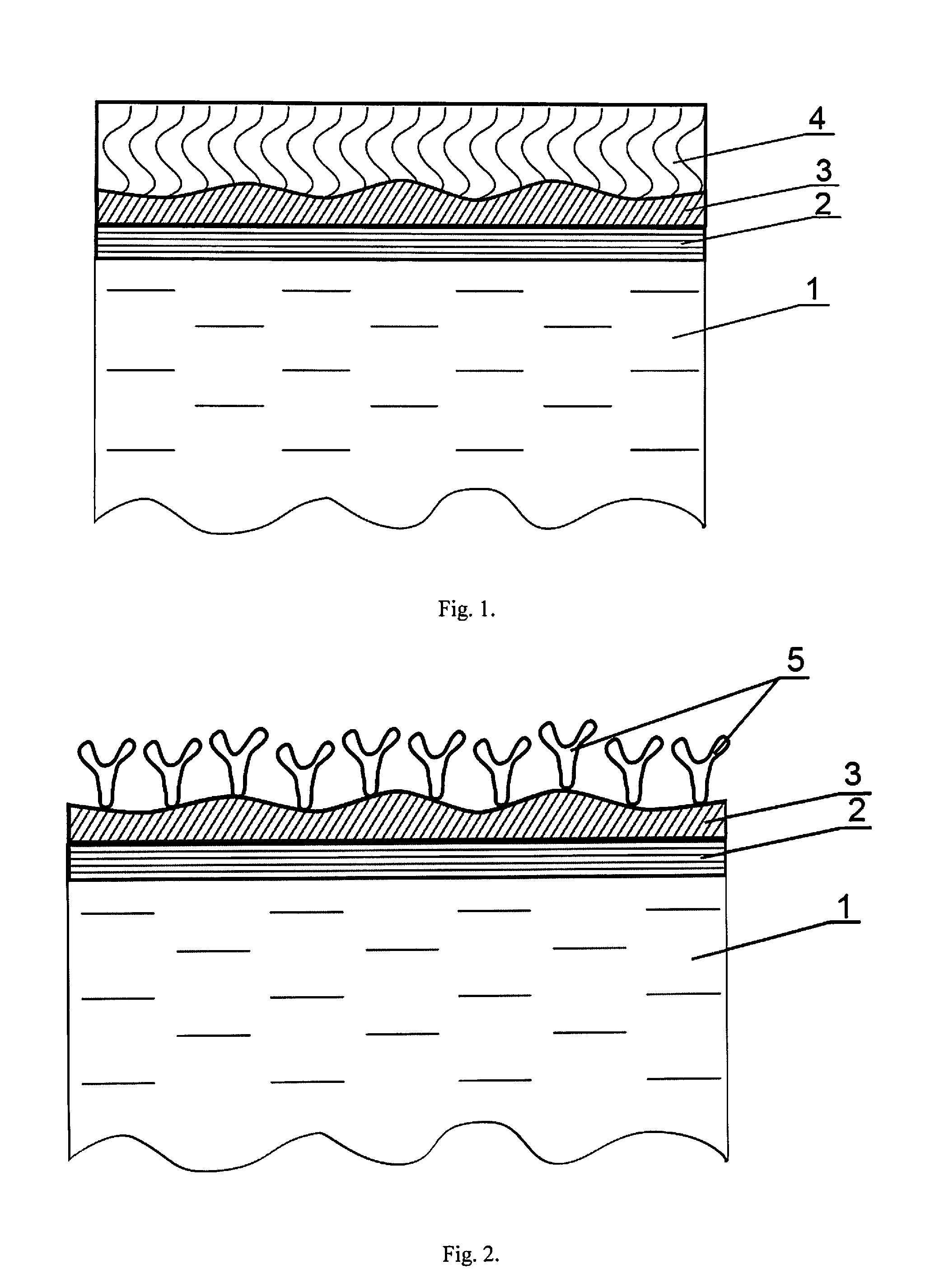Biological Sensor and a Method of the Production of Biological Sensor
a biological sensor and sensor technology, applied in the field of biotechnology, can solve the problems of low number of active centers for biomolecule adsorption, complexity of this device production, and complexity of biosensors based on these devices
- Summary
- Abstract
- Description
- Claims
- Application Information
AI Technical Summary
Benefits of technology
Problems solved by technology
Method used
Image
Examples
Embodiment Construction
[0034]The biological sensor (FIG. 1) consists of a substrate (1), a metal film (2), which is covered by the intermediate binding layer (3) made of the thin film of graphene, the thin film of graphene oxide, or the thin film of carbon nanotubes. The biospecific layer (4) is conformally and homogeneously adsorbed on the surface of layer (3). The layer of the molecules of a binding partner of an analyte (5) (FIG. 2) or the layer of the complex of the molecules capable chemically bind with the molecules of a binding partner of an analyte and chemically bond with them (FIG. 3) can be used as the biospecific layer. Also the hydrogel (7) (FIG. 4) with the immobilised molecules of the molecules of a binding partner of an analyte (5) and / or the complex of the molecules of a binding partner of an analyte and the molecules capable of chemically bind with them (6) can be used as the biospecific layer. FIG. 5 shows the kinetic curve of adsorption of the biotinylated oligonucleotides on the surfa...
PUM
| Property | Measurement | Unit |
|---|---|---|
| thickness | aaaaa | aaaaa |
| thickness | aaaaa | aaaaa |
| thickness | aaaaa | aaaaa |
Abstract
Description
Claims
Application Information
 Login to View More
Login to View More - R&D
- Intellectual Property
- Life Sciences
- Materials
- Tech Scout
- Unparalleled Data Quality
- Higher Quality Content
- 60% Fewer Hallucinations
Browse by: Latest US Patents, China's latest patents, Technical Efficacy Thesaurus, Application Domain, Technology Topic, Popular Technical Reports.
© 2025 PatSnap. All rights reserved.Legal|Privacy policy|Modern Slavery Act Transparency Statement|Sitemap|About US| Contact US: help@patsnap.com



